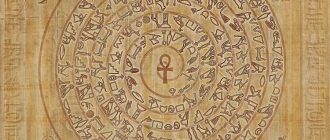Want to learn more about Egyptian God Bes? Read on for facts and info on this unusual ancient Egyptian deity…
The worship of the Egyptian God Bes was initiated during the later dynasties. This is one of the more unusual Egyptian deities and a lot of facts about him are unknown. In general Bes was considered to be the protector of the women and children of the land of Egypt.
The domain of Bes expanded over time and eventually he was being considered as the defender god of everything that is good and a staunch enemy of all evil. Historical studies from the past suggested that Bes was actually imported from Nubia in the Middle Kingdom. However recent studies have been able to link his origins back to the Old Kingdom towards the southern lands of Egypt. It was however in the New Kingdom that the cult of Bes spread across the Egyptian landscape.
The name of the deity does seem to have Nubian origins. The word “besa” is used for “cat” in Nubia and it actually translates as “protector”. The initial depictions of Bes show him as a cat like creature. Cats were popular pets amongst the Egyptians. The basic purpose of keeping cats was to rid them of the menace of snakes, rats and rodents which posed threats to human life as well as crop stores during night time. This caused them to single out Bes for worship as the protector or defender god.
Bes Physical Description
Bes is also popularly referred to as the comic dwarf god who stands as a symbol of happiness and good luck for homes. He was shown as a short dwarf like creature with a thick beard and made incredibly ugly. Many depictions of Bes show him with his tongue sticking out and holding up a rattle in his hand. Another unique thing about this particular deity was that he was never depicted in profile rather all hieroglyphics and wall paintings show him with his full face and this is something very rare to Egyptian art. In some paintings he is also depicted alongside felines and lions.
The use of masks and costumes for Bes was widespread in the New Kingdom. The fact that these costumes have signs of considerable use suggests that they were frequently used in religious ceremonies and other important cultural events. However their use was reserved for special performers only and it is quite likely that they were actually rented out to these professional performers at times of need.
The Egyptians would also make tattoos of Bes on their bodies. Bes tattoos were particular popular on the thighs of musicians, dancers as well as servant girls. With the passage of time the Egyptian God Bes became extremely popular and was indeed exported beyond the borders of Egypt. The Ancient Cypriots and Phoenicians in particular started to engage in the worship of Bes.
Historians suggest that the worship of Bes was later on Christianized as it reached into regions like Italy. The cult at Saint Bessus situated in the northern regions of Italy for example is a place associated with Bes but belongs to the Christian faith.





